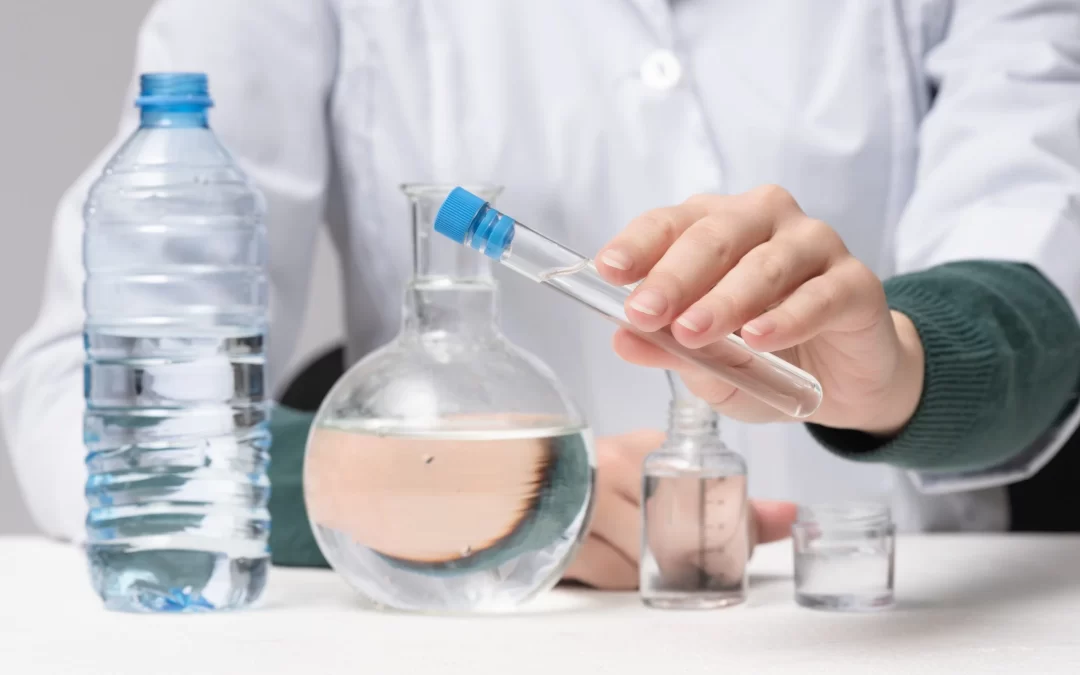The Uses of Standard Solutions in Industry
In industry, standard solutions are primarily employed for quality control and environmental safety compliance purposes.
Standard solutions are often used to calibrate the accuracy and precision of chemical monitoring instruments. For instance, they can help ensure the apparatus responsible for measuring calories and electrochemical and turbidity parameters are working correctly. Standard solutions can also determine or rule out the presence of certain pollutants in water. As a result, they’re commonly used to analyse drinking water and wastewater.

We’ve discussed their industrial uses, but what are examples of standard solutions? Some of the most common standard solutions used in industries include:
- Ammonia standards
- Sodium chloride
- Cadmium chloride
- Zinc powder
- Caustic soda or sodium hydroxide
- Muriatic acid
- Potassium permanganate
What is the Importance of Using a Standard Solution?
Standard solutions can be used for both the qualitative and quantitative analysis of substances.
They’re a crucial element in titration experiments (more on those below), providing a simple but reliable means of determining concentrations and chemical species. At the very least, standard solutions can help to rule out certain chemical species.
Standard solutions also allow experiments to be repeated easily. Scientists can independently confirm certain experiments that use standard solutions, thus helping to standardise the design and methodology.
What Are the Advantages of Using Standard Solutions?
One of the main advantages of using standard solutions is that they simplify the methodology and instruments used in an experiment. A simple burette and flask are easy to set up and use for titration, for example.
Another advantage of using standard solutions is the relatively low cost. In most cases, there is no need to use expensive instruments when performing experiments that involve standard solutions.
What is the Use of Standard Solutions in Titrations?
A standard solution is used as a titrant in titration experiments. It’s gradually added via a burette to an analyte solution, and slowly allowed to drip down until an endpoint of reaction is reached.

You can determine the endpoint by using a chemical indicator or observing the formation of solid precipitates.
By measuring the volume of the titrant before and after titration, you can calculate the concentration of the analyte using the following titration formula:
C1V1 = C2V2
Where:
- C1 – concentration of the titrant, expressed in m/L or m/dm3
- V1 – volume of the titrant, expressed in L or dm3
- C2 – final concentration of the analyte, expressed in m/L or m/dm3
- V2 – final volume of the titrant, depressed in L or dm3
You must also remember that concentration is simply the ratio between the molar weight of a substance (solute) and the volume of the solvent.
The formula works because the molar weight of a solute in a solvent remains the same, even if the volume of the solvent changes. Only the concentration (amount of solute per volume of the solvent) changes when you alter the volume.
When you gradually add a standard solution titrant into the analyte, you’re effectively changing the concentration of the analyte while also causing a chemical reaction. When an endpoint of reaction is reached, the concentration of the titrant and analyte in the new solution is near zero as new products are produced.
What is the Use of Standard Solutions in Calorimetry?
A chemical reaction involves a change in the overall energy of the system. The reaction may be exothermic or endothermic, which means it either releases energy or absorbs energy from the system. Calorimetry focuses on measuring this change in energy.

By comparing the energy of a system before and after the reaction when using a standard solution, you can determine the concentration of a solution of known composition but unknown concentration. Using standard solutions will also allow you to do calibrations by plotting the calibration curve based on the energy absorption of the standard solution.

